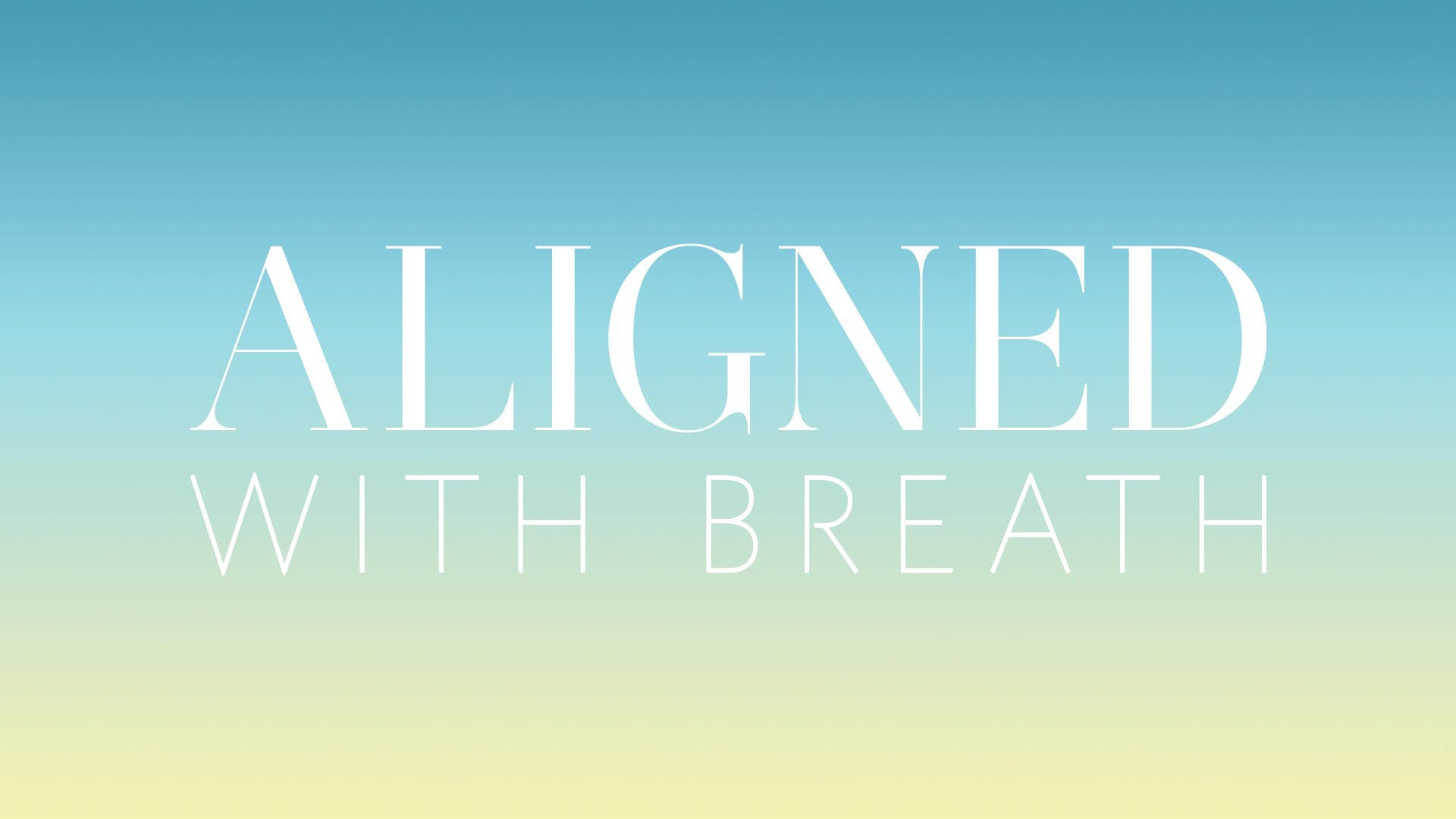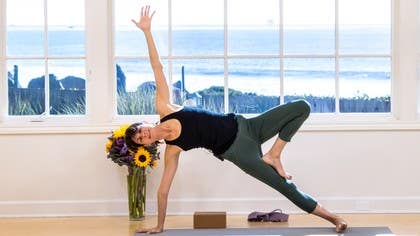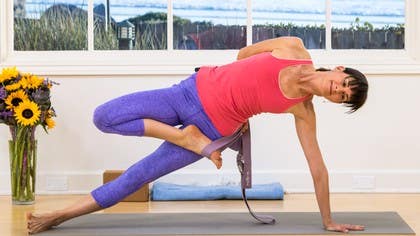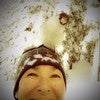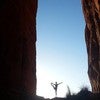Description
About This Video
Transcript
Read Full Transcript
(wave gently crashing) Hello, there was recently a New Yorker cartoon where Tarzan said to Jane, "It's a jungle out there." And oftentimes, life feels like a big jungle, sometimes out there, sometimes in here, but we get to come into the practice and come into our bodies and hopefully kind of untangle the jungle. So, let's start, actually, lying down. And hug your knees into your chest. And just use this position, it's kind of an upside-down child's pose, use it to arrive in your body. To melt unnecessary tension.
And to just begin to come in, unplugging from all the facets of your life that are outside of this moment. Okay, we're gonna do Supta Padangusthasana, for most people, a belt is helpful for this series of hamstring extensions, especially first thing in the practice. So take a belt, wrap it around the ball of your right foot and lift your right leg up towards the ceiling. Have one side of the belt in your right hand, the other side of the belt in the left hand so that the chest and the collarbones can be broad. And then lengthen your left leg, let it hover up off the ground for a moment.
Reach from your left sitting bone to your left heel, and since the tendency is for the leg to externally rotate, to roll out, we're just gonna try to roll the leg in, which also broadens the low back. And then lengthen the left leg as it comes down to the ground. As you inhale, bend your right knee a little bit, give yourself a little break from that intensity of the hamstring stretch. And as you exhale, straighten the leg, extending through both heels. Inhale, bend.
Exhale, straighten. Inhale, bend. And exhale, straighten. And then transfer so both sides of the belt are in your right hand, take your right leg, externally rotate it, so the thigh rolls out, therefore the toes roll out, keep your left leg long and carry your right leg open out to the right. If at this point it does become easy to hold onto your big toe, you can let the belt go down and just hold onto your big toe.
Otherwise, holding onto the strap is also a good idea. You can even anchor your elbow maybe against the ground for a little stability. Feel the legs, long, extending from the pelvis. And in this practice we're gonna work on some of the variations of side plank, or Vasisthasana, and the final one has this position of the legs. Use a little abdominal strength to pull the leg back up and then take the belt away, lift your head, shoulders, reach your hands towards your left foot, hover the left foot again, breathe in.
And as you exhale, switch the legs. Keep breathing, we're gonna switch five times. So, one, two, three, four, five, hug your knees in, release, open the abdomen. Breathe in, and as you exhale, right foot to the floor, left foot up into the belt, Supta Padangusthasana. Right leg lengthens, hovers off the ground, from the top of the thigh, internally rotate to widen the low back and set the thigh bone into the pelvis in a clear way.
And then release that leg down to the ground. Try to draw your left sitting bone down towards your right heel, that'll become a little easier as you inhale and bend the left knee, left sitting bone towards the right heel. Exhale, straighten. Inhale, bend. Exhale, as you straighten, feel both legs extending from your pelvis, the spine extending in the other direction.
One more time, inhale, bend. And exhale, extend. From here, the belt goes into the left hand, externally rotate your left leg and carry your left leg open to the side. You have to use some abdominal strength to stop from just flopping over to the side. Again, you can hold onto your big toe if you can reach it or put your elbow onto the ground.
And feel the body like a star, expanding, the legs expanding, the spine expanding. The right arm can expand open to the right. And then again the abdomen pulls the leg back up to the center. Take the belt away, take a breath in, as you exhale lift your head, lift your shoulder blades, descend the belly, hover the right leg, and five leg switches, one, two, make sure you keep breathing, you can decide how the breath coordinates with the movement. Five, hug your knees in.
Separate your knees, take your index finger, middle finger, hold onto your big toes. We're gonna do a version of happy baby holding onto the big toes, so the soles of the feet parallel to the ceiling, and use a little arm strength to pull your thighs towards your outer ribs. As you do this try to lengthen the pubic bone away from the tail bone so that the abdomen is spacious, and then widen your thighs a little bit more and just invite your legs to straighten, like on an invitation, there's an RSVP, they'll tell you yes, no or maybe. Just respect the answer that your legs give to you. And then bring your legs back down, scooch over towards the left side of your mat and roll onto your right side, we're gonna do Anantasana, which is a side-lying pose.
You wanna be in a really clear line, so look at your body, look at your right hand, through your right arm, right shoulder, right hip, to the heel, be in a very clear side plane. And then like we did moments ago, externally rotate your left leg, pull it up into tree pose. And you're welcome to stay here, with this left hand on the ground for stability, or you can put your left hand onto your left thigh. Anantasana, this is a nice variation if your wrists are tender in the Vasisthasana poses, you can always do them lying down onto your side. Left sitting bone is rolling underneath the pose, there's a little engagement to the left gluteus muscle.
And then hand down, leg down, roll onto your belly. Extend your legs, just a little cobra pose here. And then soften down, roll onto your left side again. Take time to line yourself up, be clear with this side plane. Right leg externally rotates, pull her up into Vrksasana, again, this gluteus muscle engages, it's an external rotator to help that right thigh roll out.
Connect to your breath, maybe finding your balance by resting your right hand onto the right leg. When I do this pose I always am reminded of seeing a Buddha in Bangkok in Thailand, this huge, huge, not as big as a football field, but a very, very, very big Buddha and I try to expand my energy out like that big, huge, golden Buddha. Release your hand, extend your leg, roll onto your belly. Take your hands a little bit off of your mat, lengthen, come up into a slightly bigger cobra, again, just listen to your body. Find a little abdominal support.
Let your heart sing through your shoulders, maybe the chin rises a little bit. And then soften yourself down, hands by the ribs. Come up onto your hands and knees and then press back into child's pose. Then roll up so you're sitting on your shins. And in Vashistasana we want to have the hands very clearly placed, it's pretty demanding practice on the wrists.
So bring one hand out in front of you and hold onto your wrist and then pull your forearm muscles up with your other hand, like you're pulling on very tight gloves. And you can do it with the other side as well, pulling the musculature up, do it a few times. There's two little rows of bones in your wrists, kind of like two little bracelets, I'm gonna try and pull space in between those wrist bones. And then place those hands onto the ground, try to keep that same feeling of an energetic lift to the forearms, and we'll do a couple rounds of cat and cow. Just letting the spine kind of loosen, let it get free, you can go at your rate.
If you wanna turn it into circles or something a little different, of course you're free to make this your own practice. And then come to a neutral spine, bring your knees together and your feet together, tuck your toes and sit back onto your heels. And then take your arms straight out to the side. Try to draw the shoulders slightly back, they tend, especially in this day in age, they tend to come forward, so the shoulders slightly back. And then lengthen from your breast bone out to each thumb.
From your shoulder blades out towards your baby fingers and then flex at your wrist, so we're establishing the position for the side plank. Widen the chest to the heels of the hands, shoulders descend a bit, and then release your arms, point your feet, Vadrasana, inhale your arms out to the side, as you exhale, eagle arms, swing your right arm underneath your left arm, the backs of your hands can come towards each other, if you can double wrap the right fingers can go into the left palm, lift your elbows. Breathe into the space behind your heart. And then release your arms, widen them to the side, breathe in, and as you exhale, left arm underneath the right arm, lift your elbows. Feel the shoulder blades widening, I think of it as windows opening to reveal the back of the heart.
And then release and come into downward-facing dog. As you inhale, rise to the balls of your feet, and as you exhale, swivel to the outside edge of your right foot and the inside edge of your left foot. And then let your pelvis begin to come down, peel your left hand up off the ground, and come into a modified Vasisthasana. Cutting the edge of your feet into the mat, back into dog but with the heels very high, high-heeled dog, and then to the outer edge of the left foot, inner edge of the right foot, the pelvis can melt down and the right arm lifts up. We're trying to get right back into that side plane like we did in Anantasana at the beginning.
A few times between those, back and forth between those two sides, up, exhale, down. Inhale. (deep breathing) It's good for the brain to shift between the two planes. Come to the balls of the feet, exhale, heels back and down, inhale plank. Exhale, lower down.
Just a little release for the wrists, interlace your fingers behind your back for a little cobra with the arms interlaced, stretching across the chest, wide collarbones. And then hands to the ribs, press back, downward dog. From here take a little walk to the front of your mat and hang over your legs, let's hold onto elbows, kinda wrapping the fingers around the upper arms. Again, counter-posing for the wrist. You're always welcome to bend your knees.
Allow the spine to pour. Release your hands, drop your tail bone, roll up bone by bone by bone. And then step your feet together, we're gonna do Surya Namaskara A. Breathe in, exhale, release your hands. Inhale, sup your arms out and up, lifting your heart.
Exhale, fold all the way over your legs. As you inhale, lengthen your spine, and then step back and lower, Chaturanga. You can go to your belly and into cobra or right into upward dog. Shoulders rolling back, that same feeling of breath across the chest, and pull back into downward-facing dog. Just a couple of breaths here.
Notice your hands, the tendency is for the weight to fall into the heel of the hands, therefore, roll the weight into your knuckles and into each finger. The tendency is for the weight to fall to the pinky side, so press the weight into the index finger and the thumb to balance the palm. The end of your next exhalation, bend your knees, look forward and walk or jump your feet in between your hands, breathe in to lengthen, breathe out to fold. Inhale, root down through your feet, sweep up. Exhale, hands to the heart, down to your side.
Inhale, sweep up, exhale, fold forward. Inhale, lengthen. Step or jump back, Chaturanga. Inhale, upward-facing dog. Exhale, downward dog, please modify as you go and make this practice for you.
It's not a one size fits all practice, so keep evaluating what you need. And there's one other point about the hands, we're always told to spread the fingers, spread the fingers, spread the fingers, sometimes it can be too much, so just make a nice, open hand print without exaggerating the spread of the fingers. And then try to lift energy from the center of your palm up through the bones of the arms, like that tight glove feeling of the forearms pulling up into the shoulders. Look forward, bend your knees, walk or jump. Inhale, lengthen, exhale, fold.
Inhale, come up. Exhale, Tadasana. Inhale, reach up. Exhale, fold over. Breathe in to lengthen.
Step or jump back, dog or through your vinyasa. And this time come back into plank position and lower onto your belly. And then bring your right forearm parallel to the front of the mat and come onto your side, this is another variation if your wrists are tender. You're gonna push down into that forearm and lift your pelvis up, and the left arm up. Shoulders roll back, extend from your breast bone to your right elbow, from your breast bone to your left fingertips.
And then lower down, left arm goes where the right arm is. Roll over to your other side, press down to rise up. Feel that clarity of the side body and the side plain. Come down, roll onto your belly, come up and back, downward-facing dog. And now, just a plain version of Vashistasana, you can just flip to the outer edge of your right foot, line up the center of your right foot with the center of your right hand.
You can always step your left foot onto the floor in front of you for a little kickstand, or stack your left foot over your right foot. Extend through your arms, shoulders back. Chest and back broad. Bring your arm up over your head, we can turn it into a little bit of a side bend. And then roll back into downward-facing dog.
Breathe in, exhale, second side. I carefully line up the outer edge of my left foot with my left hand, I have the option of putting the right foot forward, or stacking the right foot over the left foot. Be clear on the distribution of weight through your left hand, as best you can, you lift up and out of that left wrist, right arm up and over, arching the body, and roll back into dog pose. Breathe in. As you exhale, walk or jump in between your hands.
Inhale, lengthen. Exhale, fold. Chair pose, bend your knees, reach up. Let's pause here for a moment and keep your hands shoulder distance apart, soften around the shoulders and the neck. And then with your next inhalation, stand up, lift your chest, exhale, fold over.
You're gonna bend the knees, step the left foot back to a lunge. I like to use a block for this version of side angle on the outside of the right foot. Spin your left heel down, plant your right hand firmly onto the block. You can also have it on a higher height. Turn your chest and reach your left arm straight up, so here's our Vasisthasana arms, but without bearing weight.
Collarbones roll back, shoulders roll back, and the arms expand. Push weight into your left foot, strengthen the left leg and extend the whole spine out of your pelvis. Reach your arm up overhead, full pose. And then hands to the floor, lift your back heel, step forward and let's go right on over to the other side. Right foot steps back, from the top of the thigh we spin, root the legs, left sitting bone rolls under, belly turns, chest turns, arms extend.
Can you imagine having this much ease in your left wrist when you're in full Vasisthasana? Could you suck enough energy out of the earth to expand right up out and beyond through your right fingertips? Breathing. Right palm turns forward, reach up overhead, stretch from your right foot to your right fingertips. And then hands down, step back, downward-facing dog.
Let's lift the right leg up, inhale. Exhale, step your right foot forward. Inhale, come up to a high lunge. And then take your arms out to the side, flex at the wrists, and then as you inhale, straighten the front leg, rise to the ball of the back foot, exhale, open the arms, flexing at the wrists, wide chest. Big breath in, comes up.
Big breath out, expand open. One more time, inhale, rise up. Exhale, expand open, this time with your inhale, lean onto the diagonal, exhale, hands to the floor. Step back, plank position. Lower, Chaturanga.
Inhale into your back bend, exhale, downward-facing dog. Inhale, the left leg rises. Exhale, step your left foot forward. Inhale, come up. Exhale, Vashistasana arms.
Inhale, straighten, rise. Exhale, open. Inhale, rise up. Exhale, open, wide chest, shoulders down. Inhale.
And exhale. Inhale through the diagonal, exhale hands down, downward dog. Take a couple of breaths here. Inhale, lift your right left up again. Exhale, step forward.
Inhale, high lunge. Exhale, warrior two. As you inhale, straighten your right leg, exhale, tip the pelvis, come down into triangle pose. You're welcome to use your block, put your hand on your shin or fingertips to the floor. Here we are again in our Vashistasana arms.
There many sages in yoga philosophy named Patunga, named Vashista, Vashista. It means excellent or best, richest. Inhale, come up, bring your hands onto your hips, turn your right toes to face the same direction as your left toes. Inhale, push through your feet, lift your chest and as you exhale fold all the way forward, hold onto your big toes, if you can't reach them you can hold onto your shins, breathe in, lengthen your spine. And as you exhale, fold.
Elbows wide, shoulders lift. Let your inner thighs roll back slightly, but counter that with a lift right above your pubic bone, so you don't over, and slam into the hamstrings. Especially if you're flexible, you wanna feel the sitting bones come toward each other, the tailbone lengthen towards the sitting bones. If you have tight hamstrings, just rolling the inner thighs back might be enough. From here, just walk over to your right foot, come into a lunge and step back into downward-facing dog.
Inhale, left leg up. Exhale, step your left foot forward, right heel grounds, come into warrior two. Inhale, straighten the front leg. Triangle comes from the pelvis tipping over the top of the thigh bones. This is a good place to practice the bottom shoulder 'cause in triangle pose it likes to creep forward, so practice that widening of the left collarbone, the descending of the left shoulder blade.
And then radiate through your arms. Only look up if it feels good on your neck, otherwise, look somewhere else. Inhale, come up. Exhale, hands to your hips, turn your left toes to face the same direction as your right toes. Inhale, widen your arms.
This time, we're gonna interlace the fingers behind the back. Maybe you take the opposite interlace as what you would habitually do, every finger switching over one position. Inhale, arms down, heart up. Thighs strong. Exhale, again the pelvis is tipping over those thigh bones to deliver the spine down.
Arms overhead, take a couple of breaths here. With time the poses always advance themselves, they mature themselves and this is one of the poses where I just breathe, it just takes its own journey. My mind can rest and my body can have its own intelligence. Release your hands, take your time. Walk around to your left foot, come into a lunge.
This time just step your back foot to meet your front foot, inhale, chair pose, heavy feet, long spine. And exhale, Tadasana. Okay, we'll step the feet just a little bit apart from each other and just do a simple side bend, right arm comes up and then lean over to the side. Here we are in a different kind of orientation, but again, experiencing the side plane versus the frontal plane. From here, we're gonna look down at the left ankle, bring both hands to the left leg, slide the hands down to the left ankle.
Leave your left hand on your left ankle but put your right hand onto your right hip, bend your knees, drop your tail bone, come up holding onto that foot, and come to tree pose. Just a nice, simple tree pose. Let your brain float up. Collarbones open. Pelvis balanced like Mountain Pose, and the breath free.
Bring your left knee forward, Tadasana. Inhale your left arm up, exhale, side bend. This is a kind of a relatively simple pose, enjoy the clarity, the simplicity. Look down, slide your hands down onto your right ankle, then bring your left hand onto your left hip. Get your bearings first on your left leg, bend it, drop the tailbone, engage the low belly, and make your way up into Vrickshasana.
This time, let's widen the collarbones, take the arms out to the side. And then take your wrists in the other direction, point your fingers down and even curl your fingers in a little bit. Again, flexion at the wrist, and curl the fingers down. Inhale. Exhale, hands to the heart.
Bring your right knee forward and step it down. Inhale, reach up. Exhale, fold forward. Inhale, elongate. You can move through your vinyasa or just step into downward-facing dog.
From here, inhale the right leg up. Exhale, step your right foot forward, ground your back heel, warrior two. Reverse warrior. Come around, hold onto your right ankle, left hand to the floor, you're gonna come to the ball of the left foot, then the pinky side of the left foot. You're welcome to stay here or pull that foot up into Vashistasana with tree pose.
The left leg pushes up into the right foot, and then release, down dog. Inhale the left leg up, exhale, step forward, ground the right heel, roll on up through warrior two, into reverse warrior. Cartwheel down, hold onto the left ankle, spin the right leg to parallel and then to the outer edge. Get your bearings, distribute the weight well on your right hand, pull your left foot up into tree pose, and then reach your left arm up. Right foot pushes up into the left, find that gluteal engagement to externally rotate the left leg and then release.
Downward dog. Walk or jump to the front of the mat, and then Pada Hastasana, again, a counter-pose for the wrists. You take your hands, slide them right underneath your feet. Bending the knees is probably a good idea for many of us. See if the middle finger can be right in the center and the toes can be up onto the wrists.
And then roll your weight into the balls of your feet, so you're truly standing on your hands. It's the other kind of handstand. And then maybe the legs straighten but no need to. Head heavy. And just be intimate with your awareness of the connection between your hands and your feet.
Okay, from here we're gonna slide the hands out, hold onto your big toe with your right hand. Left hand onto the left hip, bend your knees, much like we did before, come up, this time holding onto the big toe. Get all the way up to stand, widen your right collarbone, drop your right sitting bone, and then extend your right leg open to the side. It's okay if the knee stays a little bent. Root your left foot, lengthen your spine, breathe.
See if you can feel something maybe different instead of wondering when it's gonna be over. Keep feeling something different. We're gonna carry this leg down, this is gonna be the fanciest move of the practice. You're gonna keep holding onto the big toe, put your foot down, put your left hand down, step your left foot back to a lunge, spin to the outer edge of the left foot. Remember everything we've talked about, alignment, left heel of the hand to the left foot, all the distribution of weight on the left hand.
And then pull the leg up and lift it up into full Vashistasana. Release. Dog. I've never seen it written but my teacher, my old teacher in New York, Genny Kapuler, used to always say that that pose is dedicated to the Big Dipper. To the Little Dipper, actually, to the Little Dipper.
I always thought that was fun. The pose is dedicated to the Dipper. Lengthen your spine, fold forward, hold onto your left big toe, right hand to the right hip, bend your knees, find a drop of the tail bone, the engagement of the abdomen, it takes a fair amount of hamstring strength to hoist that leg up. Find your alignment, long spine. Take your leg out to the side and just see what happens, don't overdo.
K, then we're gonna carry that leg right back down, delicately, perhaps, place it down. Put your right hand beside your right foot, step to a lunge, take a breath. Roll to the pinky side and then draw the leg up and lift it up. Opening the chest as best you can, shoulders back, weight distributed through the right hand, release. Down dog.
Child's pose. Let's take the hands back, fully release the wrists. Okay, we're gonna practice Shirshasana, Shitsha means head, asana means seat. So we're going to make our head our seat and practice a headstand. If you have any neck issues or a headstand's not a great pose for you, lying with your legs up the wall would be a great option.
You can also do the prep and then come down and lie with your legs up the wall. Or, also, if you wanna do it at the wall, I would definitely recommend if you're newer to it, you wanna try it, but to have a wall behind you because falling out of headstand is not so wonderful. So you're going to interlace your fingers and take the baby finger, tuck it under. Root your forearms, elbows shoulder distance apart. Have your inner wrist bones stacked right over your outer wrist bones so you're not rolling out on the hands, and then come forward, bring the very crown of your head to the floor, back of the head touching the hands.
Forearms pressing down and the shoulders lifting up. So in the first many years of headstand, try to have 70% of the weight in your arms, 30% in your head. Straighten your legs, walk in. Again, strong pressure through the forearms. Bend one knee, and then the other knee.
If you're at the wall right now, you would come and bring your feet to the wall, and then one leg lifts, the other leg lifts. We've done lots of poses today to extend the legs, continue that here, have a tremendous amount of upward energy from your pelvis to your feet. And then the combination of that with the strong pressure down into your forearms will make the neck happier, less compression down. The tailbone also lengthens up towards the heels. You're welcome to stay longer.
If you're ready to come down, bend your knees. Take your knees down towards your chest, keep lifting your shoulders, keep pushing into your forearms, and then step your feet down and come back into the child's pose. I like to interlace my fingers behind my neck and just use my hands to kind of gently pull the opposite of my back ridge, the skull, away from the neck, just extending those cervical vertebrae. Coming up, swing your legs out in front of you. Let's take the block and put it onto the shins for Pratimarsha Nasya, if you have lots of flexibility and you can rest your head onto the shins, you can do that, you could also put more props, or you can just have your head floating, but sometimes after an active practice like that I like to rest my forehead down.
So, legs press down, arms reach up, breathe in. And as you exhale, begin to tip forward at the pelvis, lengthening the spine out of the pelvis, and then coming forward, and first let's hold onto the outside edges of the feet, widen the elbows and draw the shoulder blades down. If this is a challenging pose for you to fold forward, sitting on a blanket or a block even can help, but make sure you don't press into the backs of your knees. And then softening the pose, making it almost more of kind of a yin feeling, let your hands find the ground, your elbows find the ground, and rest here. And the front lobe of the brain is where your wonderful imagination and creativity get percolating, but when we do a pose like this, we want to allow there to be a quietness to come, so that later we can go into our creative lives with more clarity.
And then come up if you're ready. Come down, just hug your knees into your chest for a moment. Ask yourself if there's anything that you'd like to do here before you come into Shavasana. Maybe a reclined twist, a happy baby. But again move from what you feel, what your experience is, not from something that you think you should do or a habit.
Shavasana, release your legs. Let your arms open to the side so your upper arms are not touching your ribs. And then, for the first few moments here, let your attention, your awareness, just scan through your body. And if you find tension, gripping, holding, usually just simply by noticing that tension it will dissolve. It's actually a scientific principle called the Hawthorne Principle, if you notice something, it changes.
Make sure to notice the muscles, the bones, the organs. Maybe even inviting a sense of relaxation into the water and the blood in your body. The relaxation to your breath. Even a relaxation to your thoughts. You're always welcome to extend your Shavasana if you have that time today, otherwise, just make some very small movements with your fingers and your toes.
And let your fingers and your toes come back into stillness and deepen your breath. Staying in Shavasana with a slightly deeper breath, let your eyes open just a little bit. And notice how you can be this relaxed and also wide awake. A good skill to remember. Bend your knees.
Bring your right arm up so when you roll over onto your right side you have a little support for your head. Pause here. I like to think of this as side Shavasana, so it's not just something to rush through, but a moment to be with. Like potentially every moment in our lives. And then use your hands to press into the ground and make your way back up to your seat.
And just take a moment to sit. Notice how you feel, both physically and mentally and emotionally. And one thing I personally love about practice is sometimes I come to my mat and I have something on my mind that feels like an elephant, and then when I leave my mat, that thing feels like a little tiny ant. And so the world is still that same jungle as we left, I imagine, but we can move back into it with more grace, ease and openness from our yoga practice. Join the hands, take a deep breath in.
And bow your head to your heart. Namaste.
Aligned With Breath
Comments
You need to be a subscriber to post a comment.
Please Log In or Create an Account to start your free trial.
